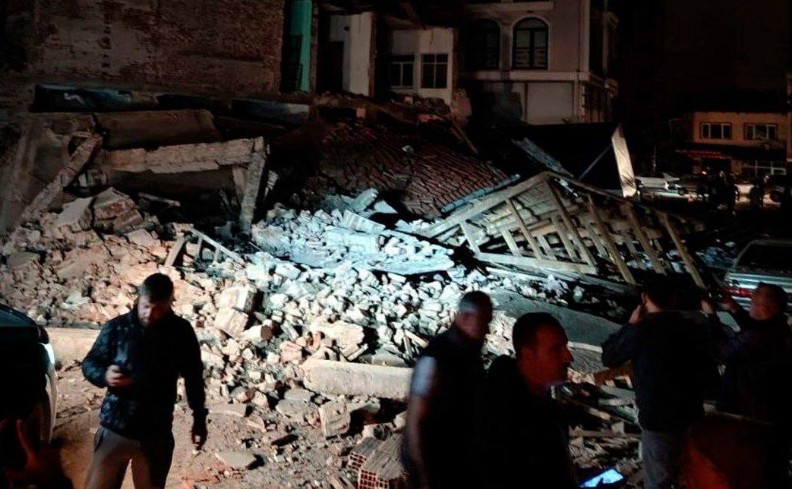Important 6.1- Magnitude Earthquake Rattles Western Turkey, fear, Damage, and a Stark reminder of the Nation’s Seismic Reality
A strong 6.1- magnitude earthquake struck western Turkey early Monday morning, shaking metropolises across the region and prompting alarmed residents into the streets.
Though no casualties have been reported, the earthquake has once again spotlighted the country’s fragile relationship with its fault lines.
The Disaster and Emergency Management Authority( AFAD) verified that the earthquake’s center was near the city of Sındırgı in Balıkesir province, at a depth of around six kilometers.
The earthquake shook through major metropolises, including Istanbul, Bursa, Manisa, and Izmir, causing structures to sway and residents to rush outside in alarm.
Witnesses described the moment with vivid fear. “The tremor was very powerful and lasted a few seconds. All immediately left for the outside,” said one Balıkesir resident.
A 6.1 magnitude earthquake shook Turkey and caused buildings to collapse in Sindirgi, Balikesir province, Turkey. pic.twitter.com/TCCr4ZFvwE
— The News Spark (@TheNewsSpark) October 27, 2025
For many, it was a familiar dread. People left their homes barefoot, phones clutched in hand, as tremors cracked the night’s calm. Sirens echoed. Dogs barked. Thoroughfares filled with anxious chatter and unbelief.
Authorities swiftly stationed brigades to assess structural damage and ensure public safety. Several domestic and marketable structures were reported to have sustained cracks and partial failures.
Power cuts affected the corridor of Balıkesir and near businesses, though most were restored within hours.
Turkey’s Interior Minister, Ali Yerlikaya, addressed the nation via social media platform X (formerly Twitter), saying emergency services were “on high alert.”
“Up till now, we have not had any report of casualties, but assessment of the damage is underway,” he stated, assuring citizens that response teams were fully mobilized.
Temporary harbors have been established for residents too shaken to return home, while external workers continue structural examinations.
The earthquake has revived painful recollections of Turkey’s long battle with seismic disasters. positioned atop some of the world’s most active fault lines, the nation is no stranger to desolation.
Just months before, an earthquake of analogous magnitude struck the same region, killing one and injuring several others.
Seismologist Dr Can Kaya from Istanbul Technical University advised of implicit foreshocks.
“This region has experienced frequent seismic activity. Even moderate quakes can cause significant structural stress in older buildings,” he cautioned, urging locals to remain vigilant.
Despite decades of trouble following the disastrous 1999 Marmara earthquake, which claimed over 17,000 lives, numerous experts contend that Turkey structures remain vulnerable.
Structural canons have improved, but millions of structures are still not earthquake-resistant, particularly in pastoral and aged civic sections.
The government has pledged to continue underpinning systems, but Monday’s earthquake served as a nipping reminder that the earth beneath Turkey is nowhere truly still.
AFAD and original authorities are maintaining a watch for foreshocks in the coming days. Citizens are being advised to stay alert, avoid unstable structures, and follow sanctioned safety guidance.
For now, relief sits alongside apprehension. The damage may be limited, but the communication is clear.
In Turkey, the temblors now just fade down; they echo through memory, policy, and the heart of a nation erected on restless ground.






